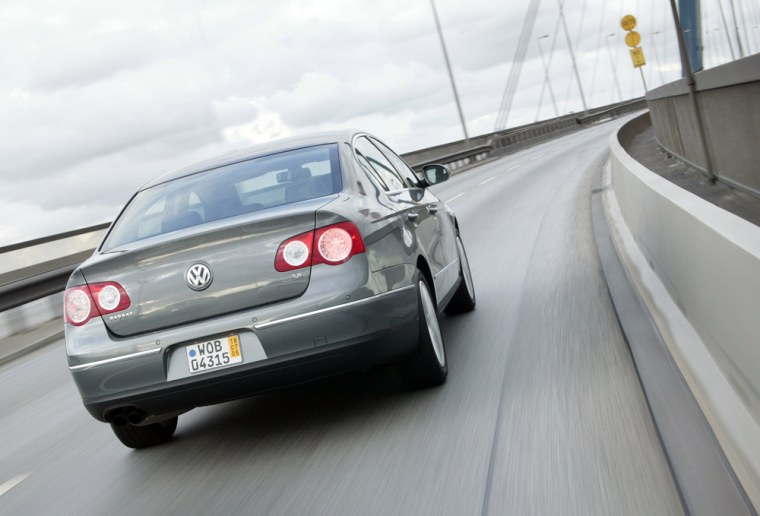When Volkswagen launched its revamped Passat in late July, there was something to admire in the new car aside from its roomy interior and enhanced styling. For the first time, Volkswagen had included bright LEDs, or light-emitting diodes, in the Passat’s brake, position and turn signal lights.
LED lights have been found in car cockpits for some time; they are used to illuminate control functions and placed in locations where constantly replacing a regular bulb would be laborious and expensive. Now they are slowly making their way into cars' exterior lights and they are starting to replace more common xenon and halogen bulbs, and while a widespread adoption of this new light technology has yet to be fully embraced, the benefits of it are plentiful experts say.
LEDs are more compact, durable and energy-efficient than regular incandescent light bulbs, and they last much longer notes Fred Schubert, an engineer at the Rensselaer Polytechnic Institute in Troy, N.Y., an academic center for lighting research.
“A regular light bulb only lasts about 500 hours running continuously, but a LED can last 10,000 hours, or as much as 100,000 hours, so that is much longer in terms of longevity, and when you think about it that’s pretty much as long as a car lasts,” Schubert said.
LEDs are new arrivals in car tail lamps and rear-window brake lights, but increasingly, innovative car designers and engineers are turning to clusters of LEDs to do the job of conventional forward lights, or headlights. To date these solid-state headlights have mostly been found in futuristic concept cars at auto shows, but many of them are moving toward production and are expected to arrive in car showrooms within a few years.
“When the first LEDs were made they were expensive and their light output was much less than it is today, but over the last few years the power of a single LED element has increased enough so that it’s more suitable for use in applications that are more demanding, such as a fog lamp, or a headlight,” said Michael Flannagan, a research associate professor at the University of Michigan’s Transportation Research Institute.
Experts like Flannagan note that LED forward lighting in cars can bring important safety benefits to drivers. A significant advantage of the technology is it has a higher switching speed than a standard bulb. This means that, while it takes a few hundred milliseconds for a bulb to light up after a brake pedal is pressed, a LED responds almost immediately once a current is flowing. This time margin may offer a vital safety advantage to a driver.
Even a fraction of a second might be critical to avoiding a crash notes Flannagan. He cites his institute’s research that shows pedestrian accidents are about four times more common after dark, which may be attributed to factors like fatigue and alcohol, and also due to lack of lighting. A significant number of the 23,000 pedestrian fatalities each year attributed to darkness could be averted if lighting were improved for car drivers he added.
“We believe that there are strong potential benefits to be gained for improving headlamps,” he said. “They have never been very good, and there’s certainly room for improvement here, so we are glad to see new technology come along that can help this.”
LED technology — which is compact, hard-wearing and not liable to be broken by bumps and potholes found on an ordinary road — may also allow for more flexible lighting says Flannagan, offering car designers greater flexibility in how they place lights on the front of a car, and also how the light is distributed in front of a car.
“For decades we’ve had low beam and high beam, but drivers have enough problems using those two functions properly, and in the night time a driver faces lots of different scenarios — the geometry of the road, the intensity of fog and so on,” Flannagan said.
“Now there are lots of promising computer-aided technologies coming along with good ideas on how to adapt front lighting,” he added. “I don’t know how close anyone is to putting these technologies on the road, or in showrooms, but there’s no question that this is feasible and the level and engineering expertise is certainly there.”
